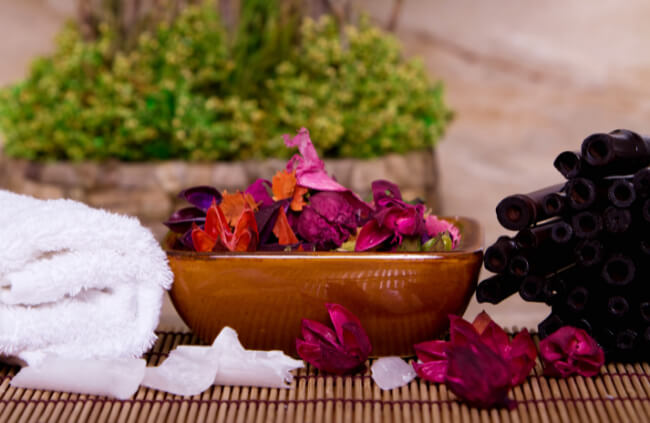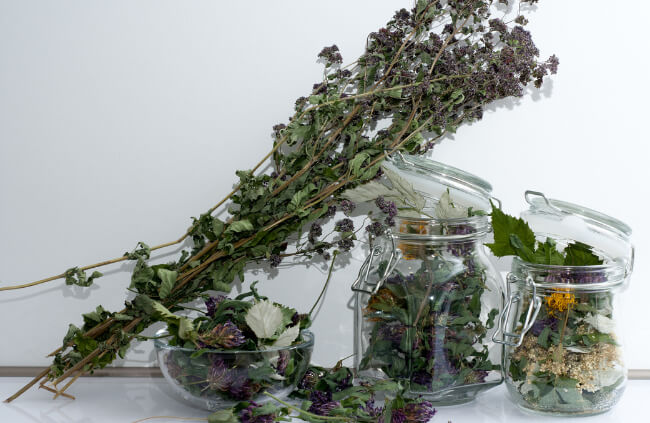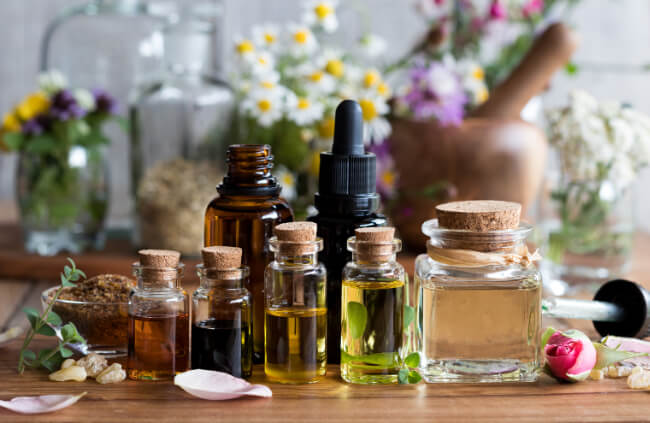Potpourri has always been synonymous with moth balls, smelling salts and basically anything ‘grandmotherly’. You could open any drawer in the guest bedroom and guarantee a small spray of the stuff.
And if that wasn’t enough it was common to find a small glass jar on the bedside table with freshly scented petals wafting through the room.
More...
Potpourri has always been synonymous with moth balls, smelling salts and basically anything ‘grandmotherly’. You could open any drawer in the guest bedroom and guarantee a small spray of the stuff.
And if that wasn’t enough it was common to find a small glass jar on the bedside table with freshly scented petals wafting through the room. But potpourri has seemingly come of age and is enjoying a renewed zest (pun fully intended!) of life.
The resurgence, it appears, is motivated by consumers who desire natural fragrances in their homes rather than those crafted in little bottles or contained in spray cans.
What is Potpourri?

Potpourri literally means ‘rot pot’ and explains their composition but also their purpose. In the days when ‘air fresheners’ weren’t readily available, and odours were much closer to us than they are today – think bed chamber pots – it was essential to mask these vile smells hence the invention of potpourri.
Today, however, they’re not needed nearly as much as they were then but interest in these powerful deodorisers is growing. Rarely would one frequent the local markets without at one stall peddling a range of potpourris and fragrant petal mixtures retail giants are getting on the bandwagon as well.
Plus, the aesthetics of these combos are sheer delight with hues and tones contrasting brilliantly.
How to Make Potpourri
So, as exciting as it may be to go and buy some potpourri from your local market or retail big box…I’m sure you will find it even more enticing to create your own. And if the products all come from your own garden how much better would that be?
What You’ll Need to Make Potpourri
Here’s what you need:
- Dried Petals
- Dried Herbs & Spices
- Dried Fruit & Citrus Peels
- Fixatives
- Fillers
- Essential Oils
Dried Petals
Rose petals are the most often used petals in potpourri, but they don’t have to be. In fact, any petal that can withstand the drying process and still has some colour and shape about it can be used in making your own potpourris.
Marigolds, calendulas, delphiniums, English stocks, snapdragons, asters, magnolias, lavatera, tibouchina, scented geraniums…ya-da, ya-da … the list could go on endlessly. The key is finding petals that will add some colour and texture to the mix without looking like it’s trying too hard.
Roses are obviously the best choice for colour and petal strength, and these can be dried whole hanging upside down in a cool, dry area of the house. If you’re only making small mixes, then individually drying each petal on blotting paper will also do the trick.
Dried Herbs & Spices

While most of your petals, except for roses, won’t hold any fragrance of their own once dried, herbs and spices become very aromatic once their moisture has been removed. Cinnamon quills, star anise, cloves, cardamom pods, juniper berries and unground mace can all add some extra texture to the mix as well as marrying some very romantic flavours.
In the herb department lavender, sage, rosemary and fennel and dill umbellifers will add some much-needed grace and charm to your potpourri.
If you have these growing in your garden, then pick a bundle when they are at their peak and allow them to hang dry in an airy spot away from the elements. When they’re crinkly dry they can be kept in airtight containers until required.
Dried Fruit & Citrus Peels
Fruit can also be a great addition to your potpourri mix. Citrus can have many uses either as dried peel, dried lemon or orange slices or even whole limes that have been zested or channels grooved into their skins.
Slices of apple, pears and persimmons can also add some great depth to the mix though they won’t add much in the way of aromatic strength. However, as an aesthetic element the use of fruit ties in really well with all the other organic materials.
Fixatives
Fixatives are the element of potpourri that holds the aromas within the mix. The most common of these is Orris Root obtained from the common Iris germanica ‘Florentina’. If you have these growing in your garden already then, you’re a blessed gardener. If you don’t, they shouldn’t be too hard to source.
Like every other component of a potpourri mix, fixatives are dried prior to assembly. In the case of Orris Root it is usually ground and then sprinkled throughout the mix. Other fixatives such as lavender stalks, patchouli leaves and even some types of dried moss can be used as is and will also help add to the texture.
Fillers
This is where the really creative come into being. Your potpourri mix may have all the essential ingredients but now it’s time to stamp your artistic flair over the mix. Pinecones, leaves, bark, pebbles, chillies, shells and other small trinkets may be used to set your mix apart and can even assist with seasonal decorations.
Ideas may include dried mistletoe and berries for a Christmas theme; small minikin pumpkins for Thanksgiving and maybe small conch shells to announce the arrival of summer.
Essential Oils

The final component to any potpourri mix are the essential oils. These are usually quite easy to access from aromatherapy shops and most pharmacies. Rose and lavender oil are the most common but there are many other perfumed oils that can add some fragrance to your mix.
Use sparingly and add more as needed rather than trying to overdo the scent in the first addition. Add a few drops then fluff the mix with your fingertips. If the aroma is too subtle for your tastes, continue until you get the right balance.
And voila! You have made your own potpourri. It wasn’t that hard, was it? And once you’ve made one mix you can easily continue creating and amending as a masterful chef with a favourite recipe.
Potpourri Frequently Asked Questions
Where can you use potpourri?
Anywhere you want to freshen. The toilet, the bathroom, the living room, the drawers, and clothes closets. If your kids are suffering from foot odour, add some potpourri to their shoes overnight and empty out in the morning.
You can even leave some in suitcases that you pack away under the bed. The next time you open them up you will be pleasantly surprised by the aroma rather than the musty smell that normally greets you.
There are many ways potpourri can be used in the house, and this is only limited by how you choose to use it. Think of all the areas where you currently use room deodorisers and replace them with your homemade potpourri.
How long will potpourri last?
It’s hard to give a timeframe on this as all it depends on the recipe you use. However, most mixes can be topped up with more essential oils and orris root or other fixatives and replenished as necessary.
Once the mix gets beyond its ‘use-by-date’ – and you will know when this is – then the whole lot can be tossed back into the compost heap ready to help your next mix come to fruition.
Published on June 5, 2023 by Gary Clarke
Last Updated on February 9, 2024




